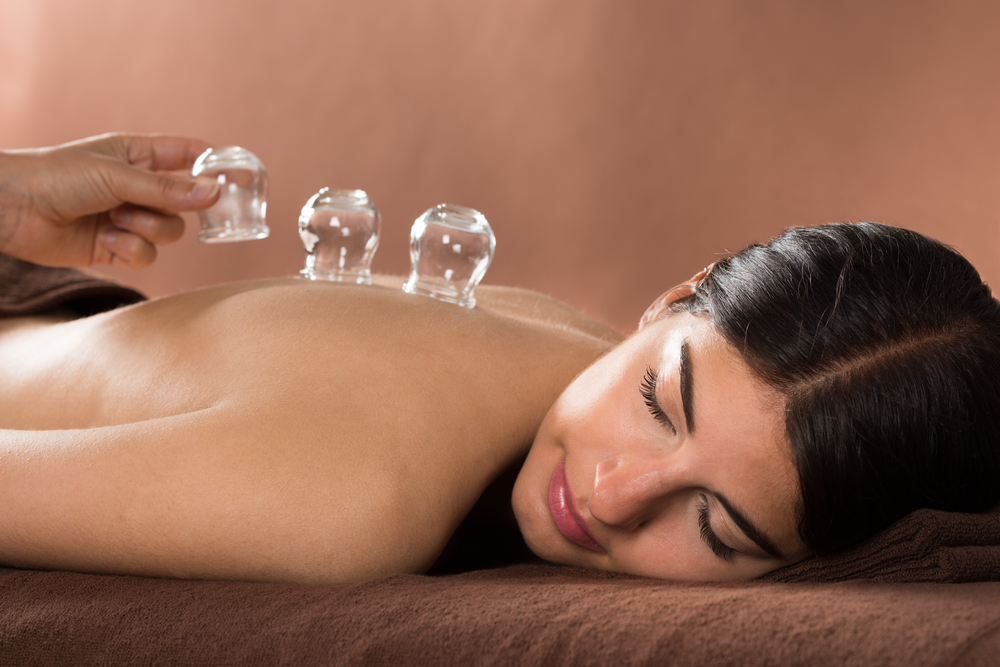
What is Cupping and How Can It Help My Chronic Pain?
You may have seen images of physicians from centuries ago applying heated cups to a patient and wondered if the practice continues today. The surprising answer is yes, and more reputable clinics are integrating it into their pain management programs because of the underlying science and low risks.
The suction caused by cupping forces more blood to flow to a specific area of the body. This, in turn, helps promote healing. Some health experts believe that cupping clears pores and removes toxins from the surrounding tissue.
Cupping has been used to treat many health issues including arthritis, back pain, and migraines. Colorado Pain Care is now proud to offer cupping as a part of its physical therapy program. Our award-winning staff will employ the latest cupping techniques to help ease your pain condition.
A Historical Perspective on Cupping
Cupping did not originate in just one civilization but arose in many places around the world. The most notable cultures that embraced cupping and continued to practice it for centuries are Egypt and China. The earliest record of cupping in Egypt is a papyrus that dates back to 1,500 BC; cupping in China may extend as far back as 280 AD.
Of course, the philosophies behind the practice of cupping is dependent upon the surrounding culture. In China, for example, cupping was believed to move around the body’s lifeforce and stimulate energy meridians.
Cupping was popular in Europe at various times. In the 14th century, cupping was commonly used to treat gout. One anecdote from 1854 tells of a doctor using cupping in a difficult childbirth. It is still used in some parts of the continent, but it has fallen out of favor among mainstream health care professions.
However, cupping has regained some of its former popularity in the U.S. in recent years. In the early 2000s, celebrities like Gwyneth Paltrow and Jennifer Aniston displayed the signature round bruises indicating use of cupping. In 2016, swimmer Michael Phelps sported similar bruises at the Summer Olympics. Phelps later claimed that cupping improved his performance, causing other athletes to quickly follow suit.
The Mechanics of Cupping
There are two primary kinds of cupping: dry or wet. In dry cupping, heat is applied to the inside of a cup, creating a vacuum as it cools. Some practitioners may use a suction cup. In either case, this pulls skin up into the cup, causing blood vessels near the surface to break.
On the other hand, wet cupping involves a similar procedure, but before the cup is applied, a needle is used to puncture the skin. This is believed to help toxins escape the body.
The entire session takes about 20 minutes to complete and consists of five basic steps:
- Primary suction—the clinician identifies the areas that require cupping and disinfects them. The cup is prepared and applied for 3 to 5 minutes.
- Scarification—this step is only for wet cupping and involves small, shallow incisions with a scalpel or punctures with a needle.
- Suction—the cup is re-applied for another 3 to 5 minutes, in which blood is pulled from the incisions or the skin is sucked up into the cup.
- Cup removal—the vacuum is released gently and the cup is removed.
- Cleaning—the area is again disinfected, and if any incisions were made, then a dressing is applied.
Colorado Pain Care utilizes dry cupping in our physical therapy facilities as it is less invasive and more closely aligned with our comprehensive treatment philosophy.
How Cupping Works
There are many theories about why cupping is effective at mitigating pain and promoting recovery, but there is no consensus about an exact mechanism. Some believe that cupping soothes overactive muscles, while others support the theory that cupping promotes blood circulation which removes toxins from the body.
One theory that is gaining in popularity is that cupping induces endorphin production. Endorphins are naturally occurring opioids that act on the brain to produce relaxation, pain mitigation and mood elevation.
Vasodilation is probably a major component of cupping’s efficacy. Cupping is known to significantly lower total cholesterol, and dilation of blood vessels may play a key role in this. This vasodilation may also stimulate the parasympathetic nervous system, which relaxes muscles and improves pain symptoms.
The current level of research is insufficient for determining which theory is correct. The most likely possibility is that more than one mechanism governs cupping therapy outcomes. In other words, multiple mechanisms are likely to be working in concert to produce pain relief.
Should You Try Cupping?
If you are eager to try out this ancient pain therapy, there are some things to consider.
- Minor pain—cupping isn’t for everyone, especially those with a fear of pain. In most instances, the amount of pain involved is very minor, but it may feel strange having suction applied. Furthermore, there may be some bruising and soreness in the days following the session.
- Skin discoloration—you should keep in mind that you will likely exhibit round bruises following the session. It varies from person to person, but the bruises may last a few days or up to a couple of weeks.
- Qualified therapist—it is important to find someone who is licensed and experienced to conduct the cupping session. A more qualified cupping professional can provide better information about the therapy and potential benefits as well as perform the treatment more competently.
- Varied treatments—cupping has proven effective in treating many health conditions including herniated disc, shingles, acne, facial paralysis and cervical spondylosis. However, it should be noted that many of the studies supporting these outcomes may have high levels of bias.
- Low risk—the primary reason why more health professionals are recommending cupping therapy to their patients is the low risk involved. Aside from bruising and bleeding (for wet cupping), which are minor risks, there are almost no reasons not to try it.
Article written by: Dr. Robert Moghim – CEO/Founder Colorado Pain Care
M.D. Disclaimer: The views expressed in this article are the personal views of Robert Moghim, M.D. and do not necessarily represent and are not intended to represent the views of the company or its employees. The information contained in this article does not constitute medical advice, nor does reading or accessing this information create a patient-provider relationship. Comments that you post will be shared with all visitors to this page. The comment feature is not governed by HIPAA and you should not post any of your private health information.



